
Women in Speculative Fiction
One can’t really discuss science fiction and fantasy without talking about how they deal with more specific cultural issues like depictions of women, race, war, religion, etc. As a white, straight, male, I’m not super qualified to speak very deeply on some of these issues [1] but they are so important that one can’t remain silent either.
To that end, when discussing any such issues, I’ll provide links and references to materials and sources I’ve found helpful/meaningful on the subject from sources better suited and qualified as well as a brief overview of how the issues interact with story in general and with our genres of choice in particular. I do not claim to be an expert on these subject, the most thoughtful or anything like that. But hopefully the links are helpful and my commentary gives you good reason to check them out.
This week, it’s women. To start with, I should state that nothing I’ll write here hasn’t been said before, better and more thoughtfully, by a whole host of female writers. Go check them out.
The main issue with stories of all kinds when it comes to female characters is failure. Just everywhere. Stories, modern or not, fail women with such fervor that it’s almost impressive.
Most issues fall into three main categories: the depiction of women’s bodies, the relationship between women and sex and the (lack of) women as characters. All of these, at their core, are the dehumanization of women. It comes down to not caring about the fact that women are human beings. The world places priority on consuming the physical beauty of their bodies over their bodily autonomy, on the sexual pleasure they can provide the audience (assumed to be men) over their sexual autonomy, on their utility to male characters as trophies, currency or other plot devices over the fact they are people who should be interacting with the story at the same level as the male characters.
In short, we see women as objects rather than actors, human shaped resources rather than humans.
Disclaimer
I shouldn’t have to say it, but one should respect women as one respects all human beings regardless of one’s desire to tell better stories because its a basic part of human decency. But this blog is about telling stories, so I do want to show how these types of social issues are integral to storytelling, whether we want them to be or not. Our social views reflect themselves in our stories and affect how those stories are told, which then later reflects back into our and our audiences social views. Our views become distilled in our stories, amplifying them. And the result is that the broader social consciousness is made more healthy or more toxic upon consuming those stories.
Further, I did not plan to write as much as I did for this article, mainly to prevent myself from putting my foot in my mouth too hard. But I hope this brief summary of a lot varied ideas is helpful and that I don’t say too many stupid things.
Dignity
First, for men who do not understand why ‘appreciating’ women’s bodies is not always welcome:
Part of being human is autonomy and a respect for that autonomy from other humans. Part of respecting someone is not invading their autonomy, whether with good intentions or not. If you do not respect them enough to respect their autonomy, all the compliments in the world are just a sign of disrespect.
Moreover, fielding comments on ourselves or on our bodies requires trust. Such comments can very easily be invasive or hurtful, so they meet us at a vulnerable place. Thus, we shouldn’t compliment a woman (or anyone) on her ‘attractiveness’ without having the right kind of relationship/permission to do so. Again, the only message it would send otherwise is one of disrespect.
As a metaphor, think of one’s person and autonomy as a house. We do not mind someone entering our house and complimenting the decorations if we’ve invited them in or have a close relationship with them. But if we do not, we call that breaking and entering[2]. Imagine the violation one would feel finding a stranger in one’s home and them complimenting the furniture. There’s a sense of danger there. Someone has come into our vulnerable space (our home) who does not belong there and who we cannot be certain will not hurt us.
One’s body, sexual life, relationships, family, health and more are all part of a deeply personal realm of our lives. No matter how well meaning comments regarding these issues are, they still constitute a violation of that realm. If we do not see this violation as a problem, then we are dehumanizing this person. If we regard our ability to stare at a woman’s body as being more important than her right not to have her personal integrity violated, then we’ve dehumanized her. We have said "You and I are not equals; my desires are more important than your dignity.”
This explanation may seem more like a broad social comment than something that belongs in a blog about storytelling. But our society and culture directly affect the kinds of stories we tell and how we tell them, and visa versa. How we depict our characters is important to the quality and impact of the story telling. One cannot write characters well if one doesn’t regard their characters as real, human people.
More Than Meets the Eye
The most obvious issue with how women are depicted in media is exemplified in a blog post from a (now-defunct) Tumblr blog:
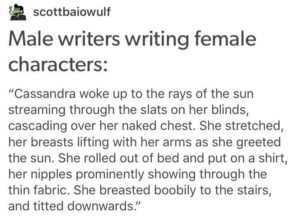
“Cassandra woke up to the rays of the sun streaming through the slats on her blinds, cascading over her naked chest. She stretched, her breasts lifting with her arms as she greeted the sun. She rolled out of bed and put on a shirt, her nipples prominently showing through the thin fabric. She breasted boobily to the stairs, and titted downwards.”
Breasted boobily, indeed.
Storytellers, when they think of women[3], have historically been obsessed with women’s bodies, almost always to the point of ridiculousness. George R. R. Martin is generally believed to write female characters well. Let’s look at a passage from A Song of Fire and Ice:
“Stay,” Ned commanded him. His voice was grave. He looked at Catelyn. “What is it? My lady, you’re shaking.” “I’m afraid,” she admitted. She reached out and took the letter in trembling hands. The furs dropped away from her nakedness, forgotten. In the blue wax was the moon-and-falcon seal of House Arryn. “It’s from Lysa.” Catelyn looked at her husband. “It will not make us glad,” she told him. “There is grief in this message, Ned. I can feel it.” Ned frowned, his face darkening. “Open it.” Catelyn broke the seal. Her eyes moved over the words. At first they made no sense to her. Then she remembered. “Lysa took no chances. When we were girls together, we had a private language, she and I.” “Can you read it?” “Yes,” Catelyn admitted. “Then tell us.” “Perhaps I should withdraw,” Maester Luwin said. “No,” Catelyn said. “We will need your counsel.” She threw back the furs and climbed from the bed. The night air was as cold as the grave on her bare skin as she padded across the room. Maester Luwin averted his eyes. Even Ned looked shocked. “What are you doing?” he asked. “Lighting a fire,” Catelyn told him. She found a dressing gown and shrugged into it, then knelt over the cold hearth. “Maester Luwin—” Ned began. “Maester Luwin has delivered all my children,” Catelyn said. “This is no time for false modesty.” She slid the paper in among the kindling and placed the heavier logs on top of it.
Martin’s female characters have depth and drive, have a impact on the story being told and are active in the plot. Yet, in this particular scene, the writing makes a point of depicting Catelyn Stark’s nudity for no discernible purpose. We learn nothing of her character from this act. Nothing in this passage is how normal people act, not for Catelyn, Ned or Luwin. Catelyn Stark is in her own chambers and can have servants or her husband bring her clothing[4]. We know that the Game of Thrones world is not any more fond of nudity than our own historical past. One might expect that, if this message is so important, she might say ‘let me get prepared to open it’ by putting some clothing on and getting in a more socially comfortable position.
She is even hesitant to open the letter and yet does not use getting dressed as an excuse to delay. In that case, we could read her initial nudity as shock at seeing the letter. But then she goes on to write it off as the urgency or gravity of the situation (‘no time for false modesty’) and does not get dressed once the shock wears off. There is no particular reason for her clothing or lack thereof to even be mentioned in this scene and what is there is confused in its purpose. It’s even weird that Luwin enters their bedroom rather than Ned Stark going outside the door to speak with him.
Unfortunately, the only real message the audience can pull from this nudity is “Hey, remember naked ladies?” And this is from an author who actually shows a deep appreciation for his female characters.
The point I’m making here is that concentrating on a woman’s body in storytelling must have a storytelling purpose. It should either drive the plot, tell us something interesting or important about the world or give us useful understanding of the character that relates to the story. If the description of a woman’s body fails to do any of these actions, at best it distracts the audience from the story. At worst[5], it confuses the story or makes the story (and author) seem immature, unfocused or unimportant, taking away any weight the tension in the story might otherwise have.
This is not about anyone’s views on nudity or women’s bodies. It’s not about prudishness. It’s not about morality. Gratuitously depicting women’s (or anyone else’s) bodies is just bad storytelling. One should have a good reason for such depictions, or focus their energies elsewhere.
Video Girl
In video games and movies, the depiction of women’s bodies is doubly important because they are depicted, in a sense, twice. Both in the writing/character design and then visually.
“But wait!” you cry, “Aren’t men just as sexualized in these media?” In short, no. I’ve heard it best explained[somewhere I can’t remember now, probably in one of the links] like this: Depictions of men in video games (and movies and superhero comics) are fantasies, male-fantasies. The huge, hulking men in these stories who fight monsters roughly 80 times their size are the fantasies of who the male audience wants to be not who the audience finds attractive. These depictions of men are the same depictions we find in action movies and young men are the prime audience of action movies.
With that out of the way, let’s look at Alexstrasza from the Warcraft franchise. Alexstrasza is a massively powerful and ancient dragon.
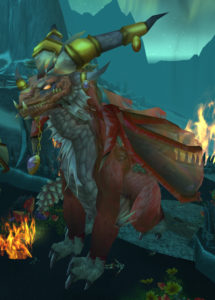
But if you want to talk to her in the game, you will find her in her humanoid form looking like:
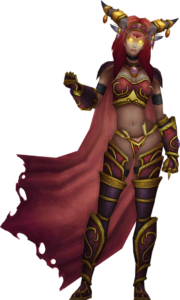
Source: WOWWiki
Why? Just, why? I mean, I know the answer: fan service[6] and male hormones. But this depiction kind of makes it hard to take the game, the character and the story seriously. It’s like the sole outcome of these thousands of years of human progress has been that we can finally take anything, anything, slap some breasts and hips on it and throw it in a bikini[7]. But again, it adds nothing to the story, the world or the narrative. She’s a hottie because. Her attractiveness doesn’t teach the audience anything about the world or about her. The fact that she has a humanoid form has no bearing on the world. Why not just a tinier version of her dragon form? Why not a scaly humanoid? Why not a cloud of smoke?
So why do production studios do this? Because fans want it. Let’s look at the characters in Skyrim:
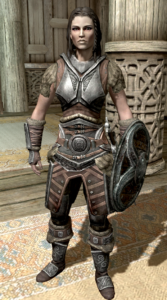
Bethesda Game Studios did a great job creating realistic looking characters in Skyrim, realistic in the sense that they have normal proportions and are fairly average in terms of attractiveness.
NexusMods is one of the most popular sources of mods for Skyrim. The fourth most popular mod for Skyrim on Nexus wtih 2.8 million unique downloads[8] is designed specifically to make the female models more (conventionally) attractive[9].
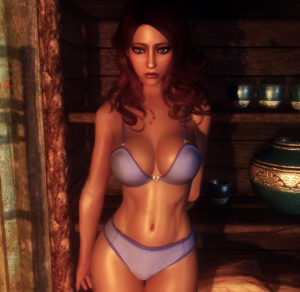
One of the more SFW example images I could find.
Curvier butts (adjustable per your taste in size), perkier breasts, smoother skin, better defined abs, you name it. And of course, while the standard game models have underwear, this mod makes them nude. The resulting 3D models end up looking like they belong more in a Maxim magazine shoot than in a pre-industrial fantasy setting where most people are still using outhouses.
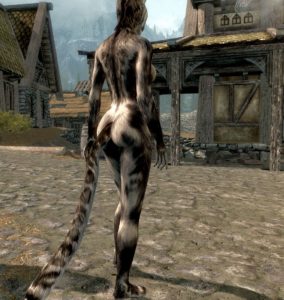
Sex Sells
As our technology improves, the means we have to tell stories become complex. But it also increases the number of ways we can destroy our stories and reduce them to a series of gratuitous pictures that have no weight or tension, regardless of how complex the tools we use to view them.
Of course, mods are an individual’s choice. And from a business standpoint, giving people what they say they want is a good strategy. But it still breaks the piece of media in terms of its storytelling. It destroys the immersiveness of the game narratively. And the most memorable, long-lasting stories-as-products are the ones that are good stories. There is something to be said for putting our energies towards creating simply good stories.
Beyond how their bodies are depicted, the relation of women to sex in stories is fraught with problems. As this is almost a whole separate discussion on its own, I won’t get into deep detail here. Most depicted sex, as opposed to implied sex, in any media has almost zero storytelling purpose or little purpose that cannot be accomplished in a better way. We don’t need a 2 minute sex scene in 90 minute film to tell us two people are romantically involved.
Depictions of sexuality are even more fraught. There are many stories created by men which involve women who are very openly sexual and have a high sex drive. Their creators argue that such women exist and there is nothing wrong with either attribute. This is true. But those are real women who get to make choices about how they exhibit their sexuality and with whom they have sex.
The sexuality of real women is not an excuse for designing a fictional woman whose actions, desires and decisions align with male fantasies. Real women have choices; fictional women do not. The storyteller is making their choices. So any storyteller has a responsibility to really think through how a character who is openly sexual would actually think and act, rather than how the storyteller wants them to act. The storyteller also needs to consider what does this character trait contribute to the story. If it’s not integral to the plot, the storyteller needs to consider whether this attribute is personal fantasy fulfillment or a sincere attempt to make a realistic, unique character. If the latter, then that overt sexuality should not take up a huge amount of story time and be implied more than explicitly depicted, because it is color for the story rather than a part of the story itself.
Again, the point is not that sexuality is bad, but whether the elements of the story serve the telling of that story. There is a difference between sexuality and sexualization. The first is an internal characteristic; the second is an external characteristic imposed on a subject. Is the storyteller depicting the intrinsic traits of a character or is the storyteller imposing the sexual qualities on the character where they do not make sense for the storyteller’s own gratification?
If the point of a work is to gratify various fantasies then the ‘success’ will depend on how the work corresponds with said fantasies. If the point is to tell a story and the use of female sexuality is for fulfilling male sexual fantasy and not for the telling of the story, then the work is less effective.
The Tropes that People Do
From the above, we see that the depictions in stories of women’s bodies and sex lives often has little to do with the story being told. They are included for superfluous reasons, almost always having to do with male fantasies regarding sex and power. So if we remove all those depictions from stories, what is left that female characters provide for stories? With the other stuff removed, there’s not much left for most stories.
Of course, there should be a lot female characters can provide. They provide all the tools any character can provide, so long as they are treated like characters and not objects or plot devices. Specifically, women can do things, take action and affect the story through those actions. Unfortunately, our society has not fully embraced this concept yet and much of the ‘character’ usage of women consists of plot contrivances and petty emotional manipulation of the audience, both of which lead to very poor story design.
The subject of story tropes concerning women is quite vast and has been explained by many others much more handily than I could. So I’ll merely still with a small list here and a perusal of the links at the top should provide helpful resources on the subject.
Poor Uses of Female Characters In Story:
- The Trophy: Wherein possession (often pretending to be a ‘consensual’ relationship) of a woman encourages a (male) protagonist to confront and overcome the main conflict in order the ‘earn’ her as a reward. See Homer’s Odyssey. Bonus points if she literally does nothing the entire story[10].
- Sacrificed as Baggage: Wherein a woman possessed by the protagonist is hurt or killed, often needlessly brutally, before the story. This either drives the protagonist towards the premise of the story, creates emotional baggage the protagonist must overcome or merely just gives the audience a reason to sympathize with the protagonist (and not actually with the woman). See Brick[11] or Max Payne[12].[13]
- Crazy is the New Sexy: Wherein a woman acts as a major antagonist, often providing a major obstacle to the protagonist because she is attractive and makes sexual advances on the protagonist. She is almost always prone to bouts of rage and sadism and her motivation is either a) ladies be crazy, b) she loves a man or c) she was rejected by a man[14]. See Homer’s Odyssey, again.
- Sexy Sidekick Sex-Prize: Wherein a woman must work with the main protagonist but they do not get along. In some cases, because she is too ditzy or fragile but the protagonist eventually ‘forgives’ her for her womanly weakness. In other cases, because the woman is too serious and dislikes the protagonists rebelliousness, eventually coming to see that the protagonist is indeed better than she is and comes to love him. In either case, the protagonist is rewarded for completing the plot by sex with this sidekick. See Star Wars (Han Solo).
- Too Many Ladies: An inexplicably talented or boring protagonist inexplicably has a horde of inexplicably attractive women who want to be with him. The protagonist’s hardest decision is which amazingly beautiful he’ll have to settle for. See a lot of animes.[15]
All of these are awful for their depictions of women as objects, first and foremost because it shows a deep contempt for women in general. Human beings do not act so simplistically with such simplistic motivations.
These depictions destroy the story for the same reasons. It’s simply not realistic. The female characters become cartoonish. While its okay to have simplistic characters depending on the style of story, that simplicity must add to the story in some way. None of these tropes do that. These depictions create stories where the motivations, characters and conflicts seem contrived and silly.
One of the reasons these types of stories are so ubiquitous is because, throughout history and even into the modern day, so much of the world’s population simply doesn’t see women as being people in the way that men are. So giving them a believably human depiction not only didn’t occur to many prominent[16] storytellers but would conflict with what, in their world view, would be a realistic depiction of women.
The takeaway is respecting women as actually being people leads to better storytelling and (even passive) disrespect for women leads to worse storytelling.[17]
Disclaimer, Revisited
Again, see the disclaimer at the top. I’m not saying you should respect women just so you can tell better stories. That won’t even work because you’ll never really respect women that way; you’ll be pretending to and that will shine through in your work. Our stories reflect our world view and if our world view is cartoonish and toxic, our stories will be the same.
I guess why I’m writing this article is to show that technique alone can’t make a truly good story. Storytelling is a mixture of honed skills and a portion of ourselves. Being a storyteller requires an awareness of ourselves and our world. True awareness of oneself requires a true reflection on, evaluation of and evolution of our views. The stories we tell throughout our lives reflect that evolution and journey and I hope that our striving to be better storytellers causes us to become better humans as well.
Stories are about people. Not just the characters, but about the author and the audience as well. If a storyteller makes not effort to understand themselves or their audience, have they really made an effort for their story?
Note: This is a broad topic that cannot be covered in a single (already too long) article. I still have more notes which I will turn into another article soon.
Footnotes:
- [1] Not that I have any qualifications to talk about anything to begin with
- [2] Burglary for non-Americans
- [3] Seldom
- [4] or get it herself
- [5] In terms of storytelling. Of course, there are worse outcomes in terms of disrespecting women.
- [6] Wikipedia
- [7] Rule 34: If it exists, there is porn of it.
- [8] At the time of this writing
- [9] For reference: Caliente’s Beautiful Bodies Edition
- [10] I’m looking at you, Sleeping Beauty
- [11] High-school / Noir film. Seriously, see it. It's quite good.
- [12] Noir-styled first person shooter
- [13] see Fridging
- [14] Ladies be crazy without their man, apparently.
- [15] Harem genre
- [16] read: male
- [17] It of course does not mean they are bad but worse than they would have been otherwise.